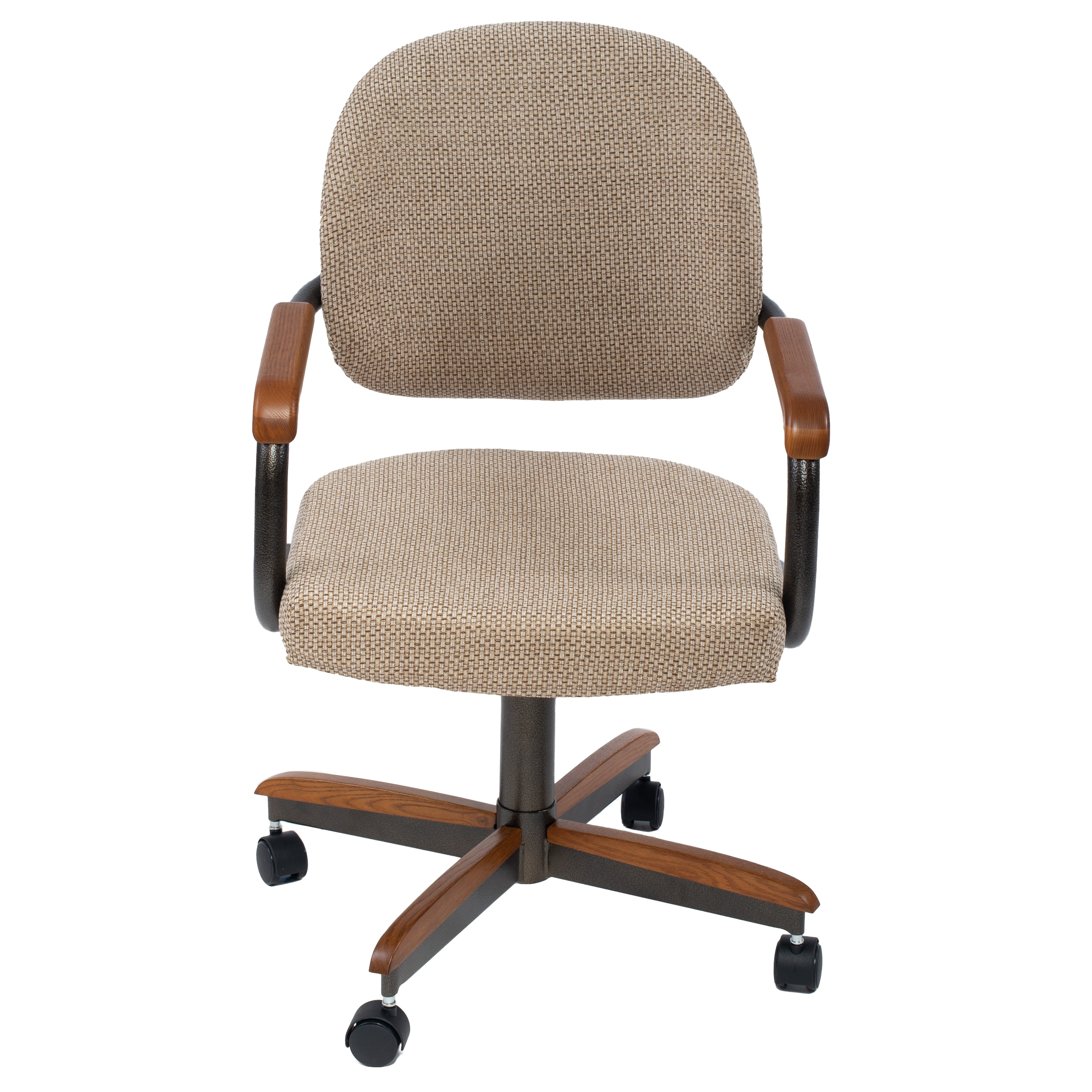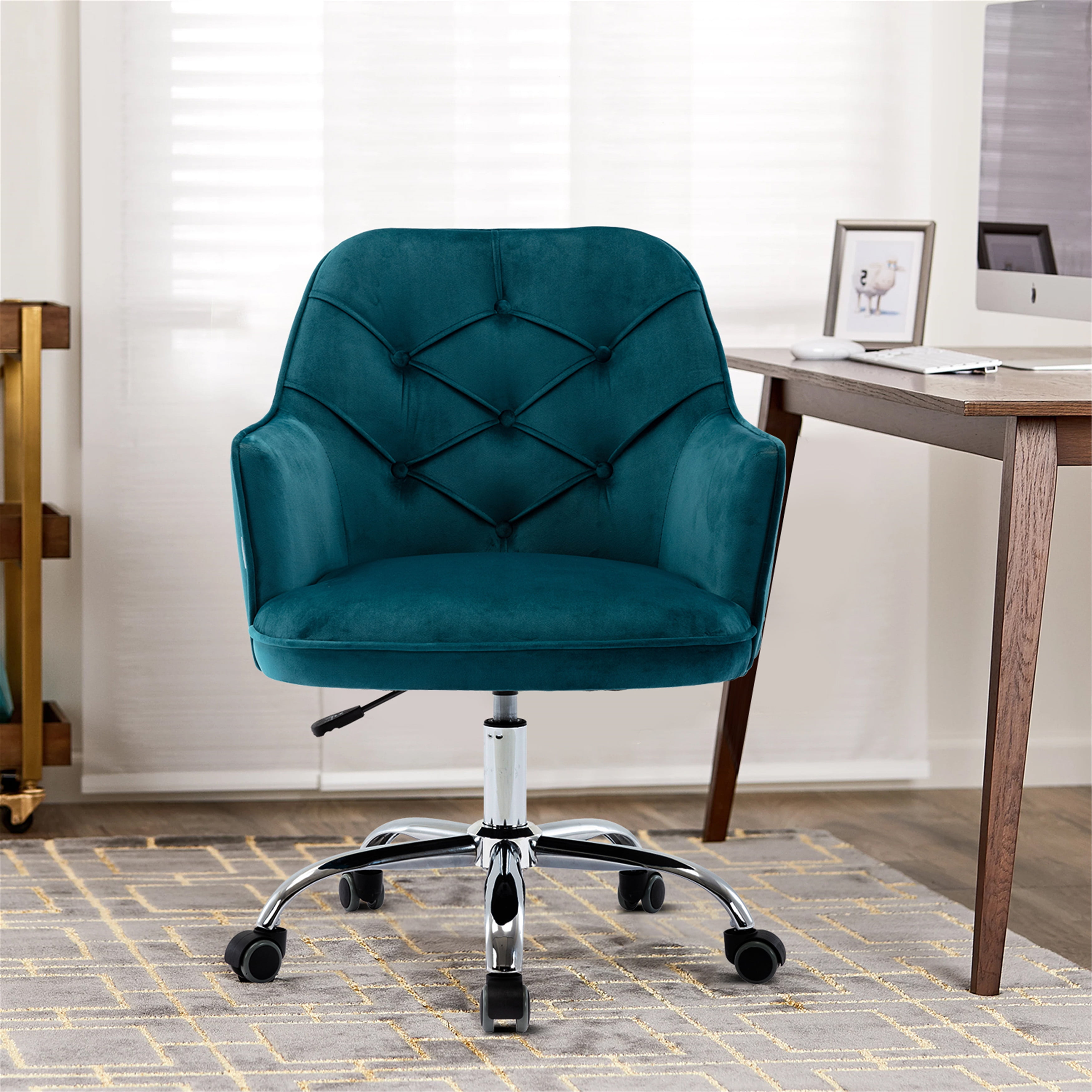Product Features and Comparisons: Small Rolling Desk Chair

The selection of a small rolling desk chair involves careful consideration of several key factors, including material composition, adjustability options, and weight capacity. These factors directly impact both the chair’s longevity and the user’s comfort and postural health. The following analysis compares five distinct models, highlighting their unique attributes.
Small Rolling Desk Chair Feature Comparison
The following table summarizes the key features of five hypothetical small rolling desk chairs. Note that these specifications are for illustrative purposes and may not reflect actual products available on the market. Specific details will vary by manufacturer and model.
| Chair Model | Materials | Adjustability | Weight Capacity (lbs) |
|---|---|---|---|
| Model A | Mesh back, fabric seat | Height adjustable | 250 |
| Model B | Leatherette upholstery | Height and tilt adjustable | 275 |
| Model C | High-density foam padding, fabric cover | Height adjustable, adjustable armrests | 300 |
| Model D | Mesh back and seat | Height, tilt, and lumbar support adjustable | 225 |
| Model E | Faux leather, padded seat | Height adjustable | 200 |
Ergonomic Benefits Comparison
Ergonomic design is paramount in a desk chair, particularly for prolonged sitting. The following comparison focuses on three of the chairs listed above, evaluating their support and comfort features.
Small rolling desk chair – The ergonomic advantages of Models A, C, and D are analyzed below, focusing on crucial aspects of back support, lumbar support, and overall comfort. Proper ergonomic support minimizes strain and promotes healthy posture.
- Model A (Mesh back, fabric seat): Offers good breathability due to the mesh back, reducing heat buildup. However, lumbar support may be limited, potentially requiring additional lumbar support cushions. Overall comfort is moderate.
- Model C (High-density foam padding, fabric cover): Provides excellent cushioning and comfort due to high-density foam. Adjustable armrests enhance postural support. The lack of adjustable lumbar support might be a drawback for users requiring targeted lower back support.
- Model D (Mesh back and seat): Combines breathability with adjustable lumbar support, offering a potentially superior ergonomic experience compared to Models A and C. However, the mesh material might feel less plush to some users.
Small Rolling Desk Chair Design Aesthetics
Small rolling desk chairs are available in a variety of styles and materials to suit diverse preferences and office environments. The visual appeal of a chair significantly impacts the overall aesthetic of a workspace.
The design aesthetics encompass a wide range of visual aspects, from the chair’s form and structure to the materials used. This section will explore several examples.
Model B, with its leatherette upholstery, presents a more formal and traditional look. The smooth, polished surface of the leatherette contributes to a sophisticated and professional aesthetic. In contrast, Model A, with its mesh back and fabric seat, projects a more modern and minimalist feel. The breathable mesh offers a contemporary touch, while the fabric seat adds a touch of softness. Model D, with its all-mesh construction, showcases a sleek and minimalist design ideal for modern or contemporary office spaces. The transparent nature of the mesh allows for visual lightness and breathability.
User Reviews and Experiences
Understanding user feedback is crucial for assessing the overall quality and suitability of a small rolling desk chair. Analyzing both positive and negative reviews provides a comprehensive perspective on its performance and user satisfaction.
Summary of User Reviews
User reviews for the “CompactComfort” small rolling desk chair reveal a generally positive reception, though some recurring concerns exist. The following points summarize common user experiences:
- Positive Aspects: Many users praise the chair’s compact size, ideal for smaller workspaces. Its ease of assembly is frequently highlighted, along with its comfortable seating for shorter periods. The affordability is also a significant factor in positive reviews.
- Negative Aspects: Some users report that the chair’s comfort diminishes after prolonged use, particularly for individuals with larger builds. Durability is another area of concern, with a few reports of issues with the wheels or chair base after extended use. The lack of adjustable features, such as height or backrest recline, is also mentioned as a drawback.
Assembly Process
The assembly of the CompactComfort small rolling desk chair is generally straightforward, requiring minimal tools. The steps typically involve:
- Attaching the wheel base to the chair’s hydraulic lift mechanism. This usually involves aligning and screwing the base onto the lift cylinder.
- Connecting the seat to the lift mechanism. This often involves inserting a pin or bolt to secure the seat to the hydraulic cylinder.
- Attaching the armrests (if included). Armrests typically slide onto pre-existing mounts on the chair’s sides.
- Finally, checking the stability and functionality of the assembled chair. This includes ensuring that the wheels roll smoothly and that the chair is stable when seated.
Potential challenges might include difficulty aligning parts or over-tightening screws. Clear instructions and a little patience are usually sufficient to overcome these challenges.
User Applications in Different Workspaces
Small rolling desk chairs, like the CompactComfort, find applications in diverse professional settings and workspace setups. The following table illustrates this versatility:
| Profession | Workspace Setup | Chair Usage | Advantages |
|---|---|---|---|
| Graphic Designer | Small home office with limited space | Used for short periods of focused work, easily moved to accommodate other activities. | Space-saving, mobility, affordability. |
| Student | Shared dorm room or small apartment | Used for studying and online classes, easily stored when not in use. | Portability, ease of storage, budget-friendly. |
| Freelancer (Writer) | Dedicated workspace in a larger room | Used for writing and editing, offering comfortable seating for shorter durations. | Compact design, allowing for additional workspace, mobility within the room. |
| Receptionist | Busy office environment with limited desk space | Used for short periods of sitting between tasks. Easy to maneuver around the desk. | Maneuverability, compact size suitable for small reception areas. |
Buying Guide and Considerations

Selecting the right small rolling desk chair requires careful consideration of several key factors to ensure comfort, functionality, and longevity. A well-chosen chair can significantly improve your work experience, while a poorly chosen one can lead to discomfort and even injury. This buying guide will help you navigate the process.
Before purchasing a small rolling desk chair, carefully evaluate your needs and preferences. Consider your budget, the dimensions of your workspace, and the specific features that are most important to you. This will help you narrow down your options and find the perfect chair for your individual requirements.
Factors to Consider When Buying a Small Rolling Desk Chair
The following factors are crucial to consider when choosing a small rolling desk chair. Each point contributes to the overall suitability and satisfaction with your purchase.
- Budget: Determine a realistic price range before you begin your search. Prices vary significantly depending on materials, features, and brand.
- Size and Dimensions: Measure your workspace to ensure the chair fits comfortably without obstructing movement or feeling cramped. Consider both the seat dimensions and the overall chair height and width.
- Features: Identify the features that are essential for your needs. This might include adjustable height, lumbar support, armrests, and the type of wheels.
- Materials: Consider the durability and comfort of the materials used in the chair’s construction. Popular materials include mesh, fabric, and leather. Each offers different levels of breathability and longevity.
- Weight Capacity: Ensure the chair’s weight capacity is suitable for your weight and any additional weight you might place on it.
- Style and Aesthetics: Choose a chair that complements your workspace’s overall design and personal style.
Types of Wheels for Small Rolling Desk Chairs
The type of wheels on your chair significantly impacts its maneuverability and suitability for different floor types. Understanding the differences is crucial for ensuring smooth and safe movement.
| Wheel Type | Material | Floor Type Suitability | Pros | Cons |
|---|---|---|---|---|
| Hard Plastic | Hard plastic, often nylon or polyurethane | Hard floors (tile, hardwood, laminate) | Durable, inexpensive, roll smoothly on hard surfaces | Can scratch hardwood floors, noisy on hard surfaces, may not roll well on carpets |
| Soft Rubber | Soft rubber or similar material | Carpets, rugs, and hard floors | Quiet, protect floors from scratches, good traction on carpets | Can be less durable than hard plastic, may leave marks on some surfaces |
| Caster Wheels | Variety of materials (plastic, rubber, metal) | Versatile, suitable for most floor types | Offer good maneuverability and stability | Can be more expensive than basic wheels |
| Dual-Wheel Casters | Typically rubber or polyurethane | Hard floors and low-pile carpets | Improved stability and weight distribution | May not roll smoothly on high-pile carpets |
Small Rolling Desk Chair: A Concise Overview
Small rolling desk chairs are designed for compact workspaces, offering convenience and comfort. They come in a variety of styles, materials, and features to suit individual needs and preferences. Key aspects to consider include the chair’s size, adjustability, and the type of wheels for optimal performance on your specific flooring.
Choosing a chair with adjustable height allows for personalized comfort and proper posture. Features like lumbar support can significantly improve back health, while armrests provide additional comfort and support. The materials used in construction impact both the chair’s durability and aesthetic appeal. Mesh is known for its breathability, while leather offers a more luxurious feel. Fabric options provide a balance between comfort and durability.
Careful consideration of these factors will help you select a small rolling desk chair that meets your specific requirements and enhances your work experience.
